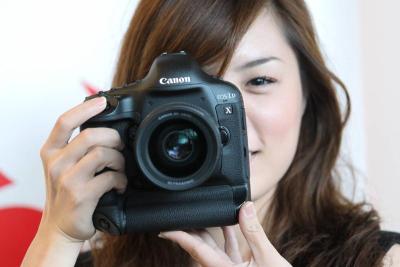By JASON LIOH
alltherage@thestar.com.my

Buying a compact camera is a lot easier and simpler compared to buying a DSLR. Buying your first DSLR will require spending more time and research as you’ll be splurging a few thousand ringgit on a gadget that you would probably be using for the next few years.
To help you with your first purchase, here are some points you should know. Warning: tech jargon ahead.
Image sensor
An image sensor is the chip that resides in your digital camera. Its function is to capture light and convert it into electrical signals. These electrical signals are then processed by another chip to create the images that you have captured. In other words, it is the “film” for digital cameras.
A “Full Frame” camera has a sensor size equivalent to a 35mm film, and has a crop factor of 1.0x.
It is very expensive to manufacture image sensors of this size. As such, it is usually found in the body of higher end models such as the Canon 5D Mark III, Nikon D4 and Sony A99; and used mostly by commercial and professional photographers. However, thanks to Moore’s Law (a prediction in 1965 that the number of transistors on an intergrated circuit would double every year), there are now cheaper full frame cameras such as the Canon EOS 6D and Nikon D800 that are priced at around RM6,000.
Sensors on APS-C cameras have a crop factor of 1.5x or 1.6x, which translates to about 2/3 the size of a 35mm film. They are much cheaper to manufacture, smaller in size and lighter in weight, which make them ideal for the lower-end DSLRs such as the Canon EOS 600D or Nikon D5200.
Four Third cameras, by Panasonic and Olympus, have an image sensor exactly half the size of 35mm film and a crop factor of 2.0x.
The crop factor is related to the ratio of dimensions of a camera’s imaging area. For example, a lens of 75mm focal length on a full frame camera will yield the same imaging area of a 50mm lens on a 1.5x crop factor camera (50mm x 1.5 = 75mm). Your camera’s crop factor will determine how wide (or narrow) is your field or view when using a kit lens and how far you can zoom when using a telephoto lens.
Megapixel
You only need a 10-megapixel camera to produce an image good enough for a poster-sized printout. However, extra megapixels produces higher resolution pictures, allowing photographers more room to crop images.
Interestingly, camera manufacturers have stopped the megapixel count race, and are now focused on making sensor or writing software algorithms that produce cleaner, sharper and better images.
Hence, do not be too bothered when your preferred DSLR isn’t a 36-megapixel camera. Photos that large will require huge computing power to open and process in your desired photo editing software. You’ll also need more disk space to store your images.
ISO performance
ISO measures the sensitivity of the image sensor to light. The lower the number, the less sensitive your camera is to light, yielding a finer grain and cleaner image. Higher ISO settings are generally used in dark environments to obtain a fast shutter speed at the cost of noisier images.
Most cameras are on par at the lower ISO settings but the difference will start to show at the higher settings. You will have to decide for yourself which camera performs better under a higher ISO setting by scrutinising the image samples provided on camera review sites.
However, I would not recommend shooting at the highest available ISO settings as they tend to be too grainy to be deemed a clean and usable photo. I would not shoot anything higher than ISO1000 on my five-year-old Canon EOS 40D.
Accessories and lenses
One of the key features of a DSLR is the interchangeable lens. While Canon and Nikon have a huge variety of lenses for different functions (macro, zoom, tele, super tele, prime and tilt shift), I can’t say the same for other brands.
Hence, if you are looking at expanding your arsenal of lenses in the near future, or need a specific lens for a specific function, do remember to check they have what you need before deciding on the brand of camera you are buying.
Other (less but still) important features
There are a lot more features such as Auto Focus (AF) and continuous focusing (AI Servo), flash sync, wireless flash system, dynamic range, multi-exposure, horizon leveller, HDR and in camera RAW processing, but they aren’t crucial to most average users. Such features are usually catered for professional photographers who need to push their cameras to the limit.
Apart from these few aspects you should look into, some of the tips I shared for buying compact cameras in last month’s column are also applicable when buying an DSLR.
The writer is finally getting a new camera after his five-year- old Canon EOS 40D “died” (RIP camera). Follow him on Twitter at @jasonmumbles.

Tell us what you think!